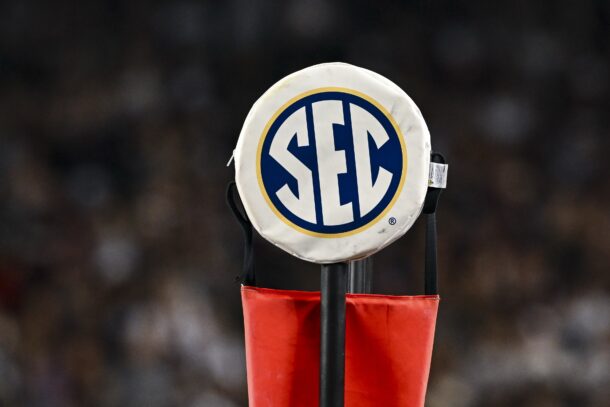
SDS sources: SEC wants to end expansion race, stay at 16 teams
By Matt Hayes
Published:
The preference of the SEC presidents is to not expand beyond 16 teams, multiple industry sources tell Saturday Down South.
“We’re positioned at 16 (teams) for a robust future,” an SEC athletic director told SDS. “The need just isn’t there.”
Potential future moves on the expansion front could change that “need,” two SEC sources say, but conference presidents believe the SEC is positioned well for the future growth of college football.
“I don’t see any (expansion) move as threatening to us,” an SEC source told SDS.
When asked if Notre Dame to the Big Ten would be a threatening move, the SEC source said, “Why? I’ll put our product vs. anyone’s product. So we’re going to just add schools to add schools? There’s no value in that.”
A move that could force the SEC to change its stance would be the Big Ten adding Notre Dame and moving to 20 teams by adding Pac-12 and/or ACC schools. If and until then, any thought of SEC expansion isn’t the preference.
The reason is twofold: value and the desire to keep college football intact.
That value isn’t just monetary. As important as big number games (ratings) are for future media rights deals, SEC presidents believe the success of the product on the field — and the resulting exclusive nature of the product — has been the critical factor in booming growth over the past 2 decades.
In 2002, the SEC distributed $95.7 million in media rights revenue to its 12 schools ($7.97 million per). In 2022, that number was $777.8 million for 14 schools ($55.5 million per).
Any addition to the conference would have to be a significant addition that checks multiple boxes, including a blueblood brand, an elite television draw and the right fit. The right “fit” is as big a factor as revenue, multiple SEC sources confirmed.
Texas and Oklahoma checked all the boxes last year when they applied for admission. Many administrators outside the SEC believe those moves kickstarted this latest round of expansion, forcing the Big Ten to add USC and UCLA to keep pace.
The SEC’s simple response: Any other conference would’ve accepted Texas and Oklahoma. If the SEC would’ve said no, Texas and Oklahoma would’ve searched for higher monetary ground — likely in the Big Ten or Pac-12.
In 2011, Texas and Oklahoma nearly joined the Pac-12 with Oklahoma State and Texas Tech to increase media rights potential, before Fox and ESPN combined at the 11th hour to structure a deal to keep the Big 12 whole.
A decade later, Texas and Oklahoma didn’t see the Big 12 as a viable alternative moving forward, and reached out to the SEC. The question moving forward: would any other school move the needle for the SEC?
Would any other school be the right “fit”?
While Notre Dame could, it appears the Irish first want to test the market to determine independent value. ND’s current NBC contract ($15 million annually) expires in 2025, and one industry source believes Notre Dame’s value could “at least be doubled” with NBC, CBS and multiple streaming sites bidding.
While there may be a few remaining schools outside Notre Dame that could make sense for the SEC (Florida State, North Carolina), the preference of conference presidents is to keep college football intact moving forward, an industry source said.
In late May at the SEC spring meetings, when asked about the SEC moving alone on future postseason commitments, commissioner Greg Sankey said the preference of SEC presidents was a Playoff that included all of FBS.
Sankey said the SEC presidents would move forward with the current 4-team model, and would take an 8-team model with all at-large selections — but the preference was a Playoff that gave access to all of FBS.
The message was clear: college football is better with all involved.
“We talk about value all the time. Well, there’s great value in college football as a whole,” another SEC source said. “I don’t think any of us, in any conference, can ignore that. There’s too much empirical data that shows it.”
Matt Hayes is a national college football writer for Saturday Down South. You can hear him daily from 12-3 p.m. on 1010XL in Jacksonville. Follow on Twitter @MattHayesCFB






